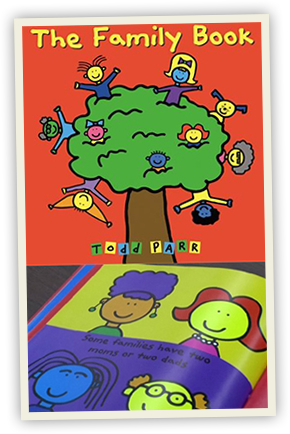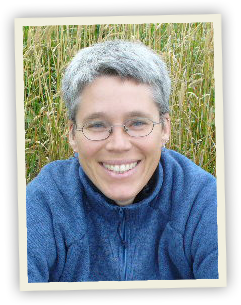Other Peoples Parents
Originally Published in Multiple Moments: A Publication of Multiple Births Canada
Quarterly Issue 3, 2012 - LGBTQ Support
“Where is the other mom?” my three-year-old daughter asks.
“He has one mom and one dad” I replied.
“Why?” she said.
“Well, all families are the same and different. All families love their kids and some families have a dad.”
“Okay but where is the other mom?”
“Sleeping.”
Educating children and parents about other families starts early for LGBTQ families. Before there is any entry into mainstream systems such as daycare, schools and extracircular activities, LGBTQ families start talking about all kinds of families so our children are exposed, aware and prepared for meeting all kinds of folks.
 Thanks to author Todd Parr, there are some beautiful and colorful books to help illustrate that families come in all sorts and sizes. Check out “The Family Book” and “It’s Okay to Be Different.”
Thanks to author Todd Parr, there are some beautiful and colorful books to help illustrate that families come in all sorts and sizes. Check out “The Family Book” and “It’s Okay to Be Different.”
Talking with our children about diversity early means they will have a greater awareness of different family constructs and this could lead to more acceptance for others and themselves.
Before our children encounter their first comparison with their peers we have an opportunity to teach them how to accept and be aware that differences are okay. This approach may teach gratitude and loving acceptance of oneself. Some families have two moms with grandmas and grandpas, uncles and cousins while others have no extended family and still others have parents in two households.
“Where is her dad?” the little boy asked us at the park.
“She doesn’t have a dad, she has two moms.”
“Why does she have two moms?”
“She has two moms because we love each other and love her. With two moms she gets to paint and cuddle and cut the grass and fix things, do you like to do those things too?”
“My dad cuts the grass because he’s a boy.”
How we begin to challenge gender stereotypes is also a part of educating our children. With multiples there may be another layer of complexity. For example, your response to your boy- girl twins who love to have similar, if not identical toys, may make a statement about what is acceptable for your family.
Even when you are comfortable and accepting that your son can dress in a tutu and your daughter has her own drill you (or your kids) may receive a lot of pressure that it’s not okay. With same-sex twins, it may also seem to be that much more work to ensure that you have a balance of what might be considered boy or girl toys. Family and friends play an important role in the gifts that give the messages of what is appropriate for your children’s gender.
In a fantastic book “Pink Brain Blue Brain: How small differences grow into troublesome gaps - and what we can do about it”, neuroscientist Elise Eliot writes that preschoolers have the most rigid stereotypical gender role expectations.
A study by Robert Plomin, described in Dr. Eliot’s book, of three and four year-old twins found that 50 per cent of gender-typical play is heritable. “This leaves the other half, of course, determined by nurture, or the various social influences that nudge boys and girls to their extreme differences in play choices” (Pg. 110).
When your child asks, why does that boy have barrettes in his hair or states that girls can’t drive fire engines, this is your opportunity to challenge the learning that is so subtly occurring. Equally important is emphasizing that girls and boys can be and are doing the same things.
In the lobby of an obstetrician’s office I overheard a little girl tell her mom, “I hope it’s a boy.” And the mom replied “Why? Yesterday you wanted to have a sister.” “If I get a brother I can get some cars.” The mom offered to buy her girl some cars although at the same time said she would have to share her dolls, as though there was a trade off that had to happen. What happened that this family didn’t think their child wanted the opportunity to play with cars? How did this girl learn that she had to be associated to a boy in order to have access to vehicles? The same can probably be said for boys’ access to dolls and dress-up.
As parents our job involves navigating and interpreting the world around us to our children. It requires us to advocate and respond to all opportunities of education, including differences in families and gender stereotypes. As Todd Parr would say, “some families have two moms or two dads... and some families look alike... there are lots of different ways to be a family. Your family is special no matter what kind it is.”
Tania Zulkoskey
LGBTQ Support Network Chair





